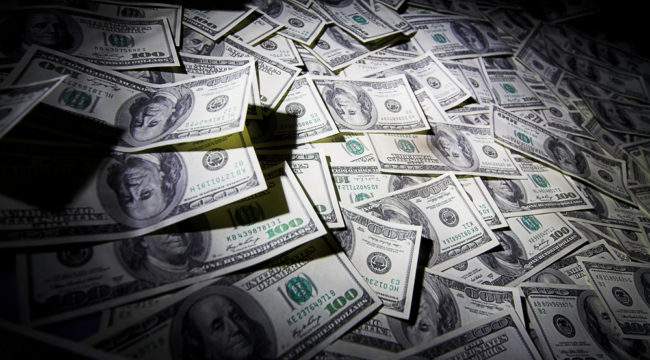Central Banks: The Great Experiment Has Failed
My latest book, Collusion: How Central Bankers Rigged the World, is about the leading central banks and their incestuous relationships.
The book dives into how central banks rigged the cost of money and the state of the markets, and ultimately created more inequality and instability as a result. They did all of this in order to subsidize private banks at the expense of people everywhere.
The book reveals the people in charge of these strategies, their elite gatherings and public and private communications. It uncovers how their policies rerouted economies, geopolitics, trade wars and elections.
Central banks have several functions from an official standpoint. The first is to regulate the smooth and orderly operation of private banks or public banks within a particular country or region (the ECB is responsible for many countries in Europe).
The other function they are tasked with is setting interest rates (the cost of borrowing money) so that there’s adequate economic balance between full employment and a select inflation rate.
The idea is that if the cost of money is cheap enough, private banks will lend to the general population and businesses. The ultimate goal is that the money can be used to expand enterprise, hire people and develop a stronger economy.
In an environment where the cost of money is too cheap, it could cause inflation. When inflation rises, central banks are expected to lower the cost of money in order to keep it under wraps.
While those basic functions should be relatively simple, what has unfolded is anything but.
Since the financial crisis, the Fed has been unleashed. The U.S. central bank has quite literally fabricated nearly $4.5 trillion in funds to buy bonds (assets) from the major private banks. It should be noted that those private banking institutions are members of the Fed system.
The Fed then provides that money to the banks and the institution can then hold the funds in reserve, or choose to sell their Treasury or mortgage bonds back to the Fed.
The reality is, central banks have provided money as cheaply as possible to banks in order to keep the private banking system operating.
When looking at the world since the financial crisis, it was clear that there was a “pivot” between regions. Different countries, and their respective central banks, were either forced to participate in, or caught up in, in the collusion started by the Fed.
The Fed’s playbook was then deployed across the world by other central banks.
In particular, the G7 collectively fabricated $21 trillion worth of money. They took the liberty then to buy government bonds, corporate bonds, mortgage bonds and, in the case of Japan, ETFs (exchange-traded funds). Other banks, like Switzerland, went so far as to create money and directly purchase stocks.
What this meant was that an external supply of money was injected into the world’s markets, in a nearly limitless amount. These actions pushed markets higher, and the bond markets were inflated with this excess money, causing a new round of debt bubbles.
These “conjured money” efforts did nothing to alter the fundamental values of companies. Companies could borrow money and buy their own stocks on the cheap, increasing the size of corporate debt and the level of the stock market to record highs.
Because money was so cheap and interest rates so low, no other investment opportunities could offer the same high returns, so speculators piled into the stock markets, further elevating their levels.
We have built up corporate debt and the markets to such great highs that the potential for a fall would be at an unprecedented level. To further complicate the matter, we have seen record buybacks occurring in the markets, but such landmark moves are not connected to organic growth and are detached from the foundation of any economy.
To visualize this, imagine pulling the rug out from under a table full of dishes. The higher you stack the dishes, the greater the crash when they fall.
Today’s global debt to GDP ratio stands at a record of 224%, according to the IMF’s latest calculations, amidst record debt of $164 trillion. Much of that debt was created because the central banks offered up money at such cheap levels to borrow.
To add to the complexity, certain central banks are starting to realize that reversing their course could present its own problems. If those cheap money rates do rise, and currencies like the dollar appreciate in value, developing countries that took on debts over the past decade will be cornered into a difficult position to repay it.
That debt trap itself could be a catalyst for economic shock and job losses. Such moves would likely begin in lesser-developed economies, and eventually grow outward.
There is also considerable reason to believe that any major banking collapse could have similar characteristics. Banks will either lock down the money they lent, or restrict the funds available for withdrawal to depositors, depending on the severity level of collapse.
Historically, governments have tried to respond to such conditions with government-led bailouts (augmented by corresponding central bank bailouts), but they are not usually enough to forestall stock markets crashing, pensions tanking and life-insurance funds being gutted.
Perhaps most alarming, we have seen virtually no real steps to reform the financial system.
Despite some cosmetic regulations to curtail certain risky behaviors, since the repeal of the Glass-Steagall Act in 1999, there is still no division between depositors’ funds and those used by banks for speculation.
The big banks continue to make massive trading bets, and corporations are still focused on buying back stock for short-term shareholder gains rather than reinvestment in their businesses.
Since the financial crisis, not a single bank CEO has been seriously punished, despite the frauds and felonies committed by the biggest U.S. banks. If a person steals a car, he gets charged with a felony and likely goes to prison. If a big bank, like Wells Fargo recently, scams millions of dollars of phony fees from its customers, its CEO gets a raise.
Meanwhile, the government regulator in charge gets a promotion to a top spot in the Federal Reserve system.
By bringing back legislation like the Glass-Steagall Act that divides those two elements of banking, separating them into different institutions, we could keep banks from having greater influence on government. It would also help protect everyday citizens’ money.
Meanwhile, we could limit the amount of money central banks can fabricate to artificially elevate these banks and the markets — markets in which the majority of people have no stake. In fact, just 10% of the population owns 84% of the stock market.
At the very least, we could have an independent audit of these central banks to allow voters and leaders to better understand where their money goes and what is used for.
We should also call out and alter the austerity measures enacted throughout the world that are punitive to people, while in the backdrop so much money has been conjured to help the banks and financial system.
By doing so we could potentially shift central banks’ roles as well as private banks’ incentives to building long-term infrastructure and to financing small and local businesses. In this way, we could assist the less wealthy and enable upward mobility for all.
Globally, the $21 trillion conjured by these central banks that still remains, if diverted into the foundational — or real — economy could provide regular citizens of the world (to whom I dedicate my new book) a fighting chance.
Regards,
Nomi Prins
for The Daily Reckoning



Comments: